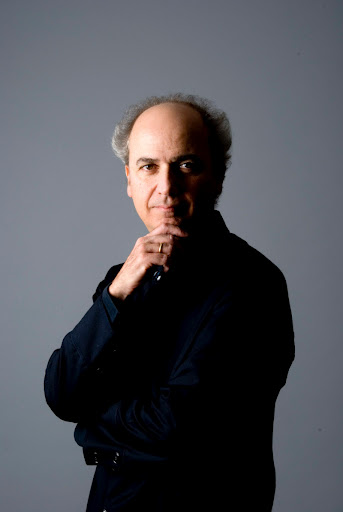Miami Symphony Orchestra opens 25th season in dynamic style

Eduardo Marturet opened the Miami Symphony Orchestra’s 25th season Sunday night at the Arsht Center.
The renowned Spanish guitarist Ángel Romero is an old friend of the Miami Symphony Orchestra, and so it was fitting that he would perform on the first concert of the orchestra’s 25th anniversary season.
Romero joined the orchestra Sunday at the Arsht Center for one of his specialties, Rodrigo’s Concierto de Aranjuez. Although he must have lost count how many times he’s played this work in public, Romero gave no indication that he found it anything less than delightful.
His absolute command of the instrument allowed him to play with lightness and nuance that seemed just right in Rodrigo’s jaunty melodies, tossing off the runs and Spanish-inflected ornaments that decorate the tunes. In the second movement, his playing was redolent with nostalgia, sensuality and warmth, giving an almost vocal eloquence to the melodies. Under music director Eduardo Marturet, the orchestra made the most of this richly colored score, ingeniously orchestrated to allow the small plucked instrument to shine.
The concert opened with the world premiere of a work by Marturet himself, Two Readings of Waldo. Inspired by the work of the artist Waldo Balart, who attended the concert, the work was composed to accompany a video art display of Balart’s paintings by Fernando Duprat, boldly geometric abstracts that rely on bright primary colors. In a program note, Marturet explained that he composed the music to follow the colors of the paintings, with different colors corresponding to different notes.
From that approach, you might expect music that made sense on paper but sounded wretched in the concert hall, but that turned out not to be the case. The work begins with flute and harp in an ominous dialogue over long held tones in the strings. The tension resolves, only to return. Finally a more lyric passage in the piano leads to a big optimistic theme in the full orchestra. Marturet’s Two Readings of Waldo is an absorbing, tension-filled work that clearly reflects the instrumental knowledge of a man who knows his way around the symphony orchestra.
Next came Beethoven’s Piano Concerto No. 5, with soloist Andreas Boyde. Although there was some vague playing in some of the fast passages, Boyde and the orchestra produced a more-than-respectable performance of Beethoven’s heroic concerto.
Boyde is an energetic player and took an aggressive approach that never allowed the orchestra to come close to covering him up. But he could also play with delicacy and pointed precision, as in the first movement’s minor key second theme.
The pianist played the long melody of the second movement with a songful yearning that never stretched the music out of shape. The last movement was high-spirited and virtuosic, with Boyde showing he could play runs with clicking articulation or seamless smoothness, depending on the situation.
The orchestra really got to show what it can do in the final work, Leonard Bernstein’s Symphonic Dances from West Side Story. This arrangement, prepared by the composer, contains some of the most famous tunes from his celebrated Broadway musical.
The orchestra’s fine string section gave a lushly evocative performance of “Somewhere.” The brass were brilliantly kinetic in the “Cool” section and throughout the final third of the work they delivered an edgy and piercing performance of Bernstein’s evocation of gang violence without any sacrifice of technical excellence.
Posted in Performances
Leave a Comment
Mon Oct 21, 2013
at 6:08 am
No Comments




